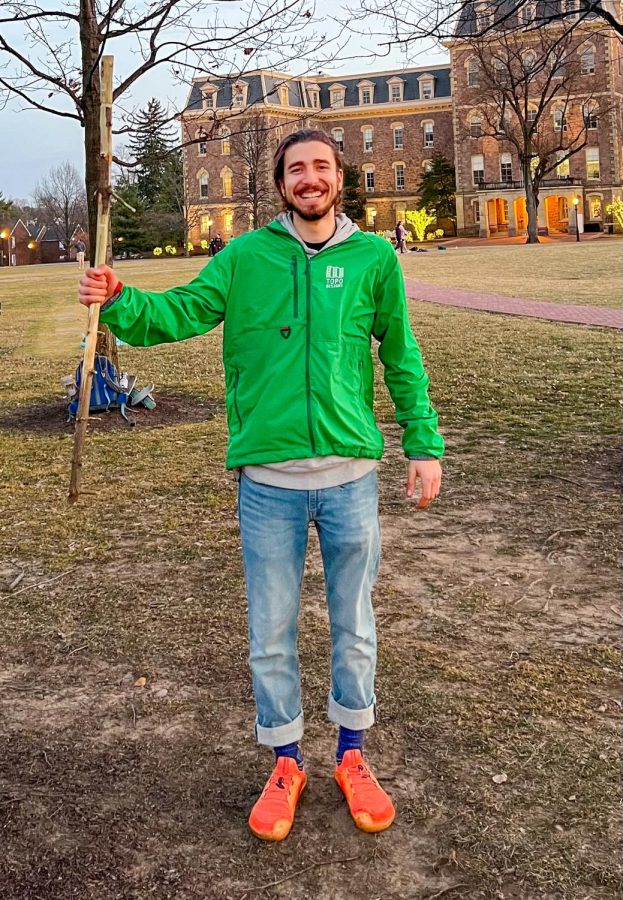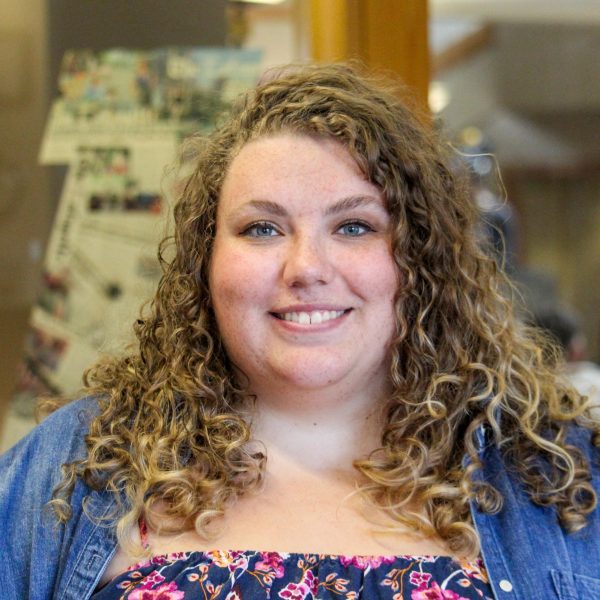If you’ve seen people around campus carrying large sticks as accessories, it’s not a new fashion trend — it’s students completing their latest assignment.
Art professor Nestor Gil had students in his Art and the Environment class complete an unconventional task: carry around a stick with them for the entirety of the semester. The sticks, which were chosen as “good sticks” by the members of the class before they knew the extent of the assignment, vary in size, shape and function, but Gil hopes they teach his students a number of important lessons.
These lessons include “something about the natural world, something about our relationship to found objects, something about the way that every material object [can] carry into the discussion on its own — we don’t have to apply meaning to the stick,” according to Gil.
Gil wants students to think heavily about their stick’s function — or lack thereof.
“You can go out anywhere and get stuff and that stuff can become important to you, even if its reasons for being important are not evident at first,” Gil said. “[The stick] has no function, but we’re just gonna become accustomed to keeping it around. The more we keep it around, the more we’re going to learn how to interact with it and how to deal with it.”
Additionally, Gil noted the tendency for students to form a close relationship with the stick after carrying it for so long.
“There’s a general sense of wanting to establish a kind of intimacy with this material thing that we encountered by chance and selected with intention and to deal with all the conveniences and inconveniences that come from our affiliation with that object,” he said.
Remy Oktay ‘24, one of the members of the class, has experienced just that. “I would be pretty distraught if the stick were to go missing,” he said.
Oktay has allowed people he encounters to carve symbols into his stick, creating a piece of community-based art.
“When I eat dinner with someone or run into somebody and we have a few minutes, I ask them to carve something,” he said. “I’ve been taking a series of photos of other people that have been carving the stick, and those photos and the stick will become a catalog of this semester.”
Other students are taking alternative approaches to the task. Juliana Soldat ‘24, for example, has sharpened her stick into a pointy stake.
“I’m kind of taking a different route to it than just accepting the assignment,” Soldat said. “I was like, ‘Well, what are we not allowed to carry on a college campus? What is on the list of impermissible items?’”
Gil encourages his students to challenge expectations like Soldat is. “Art likes to break things. Art likes to challenge conventions,” he said.
Accordingly, Gil hopes his students will embrace the unconventional nature of the experience.
“They’re curious — they’re having cool ideas,” Gil said of his current students. “They’re game for the weird, and weird is a wonderful place to go,” he said.
This is the third semester Gil has assigned his students this task.
“It’s very rare that a student is resistant to some idea because it was uncool, and since cool is the enemy of creativity anyway, we just can’t really give much space to cool,” he said. “We have to make sure that creativity always stays in charge.”
For Oktay, the project has given him the welcome opportunity to add something new to his daily routine.
“For me, it’s exemplified how we can find use in anything, and switching up the rhythms of one’s everyday life can be fun and exciting and teach you new things,” he said.
This routine disruption is another one of Gil’s goals. “They are recognizing the capacity of art-making as resistance to the interminable ennui of contemporary existence,” he said.
As for what happens to students who are seen without their stick, Gil put it simply: “That’s not good for them.”




















































































































